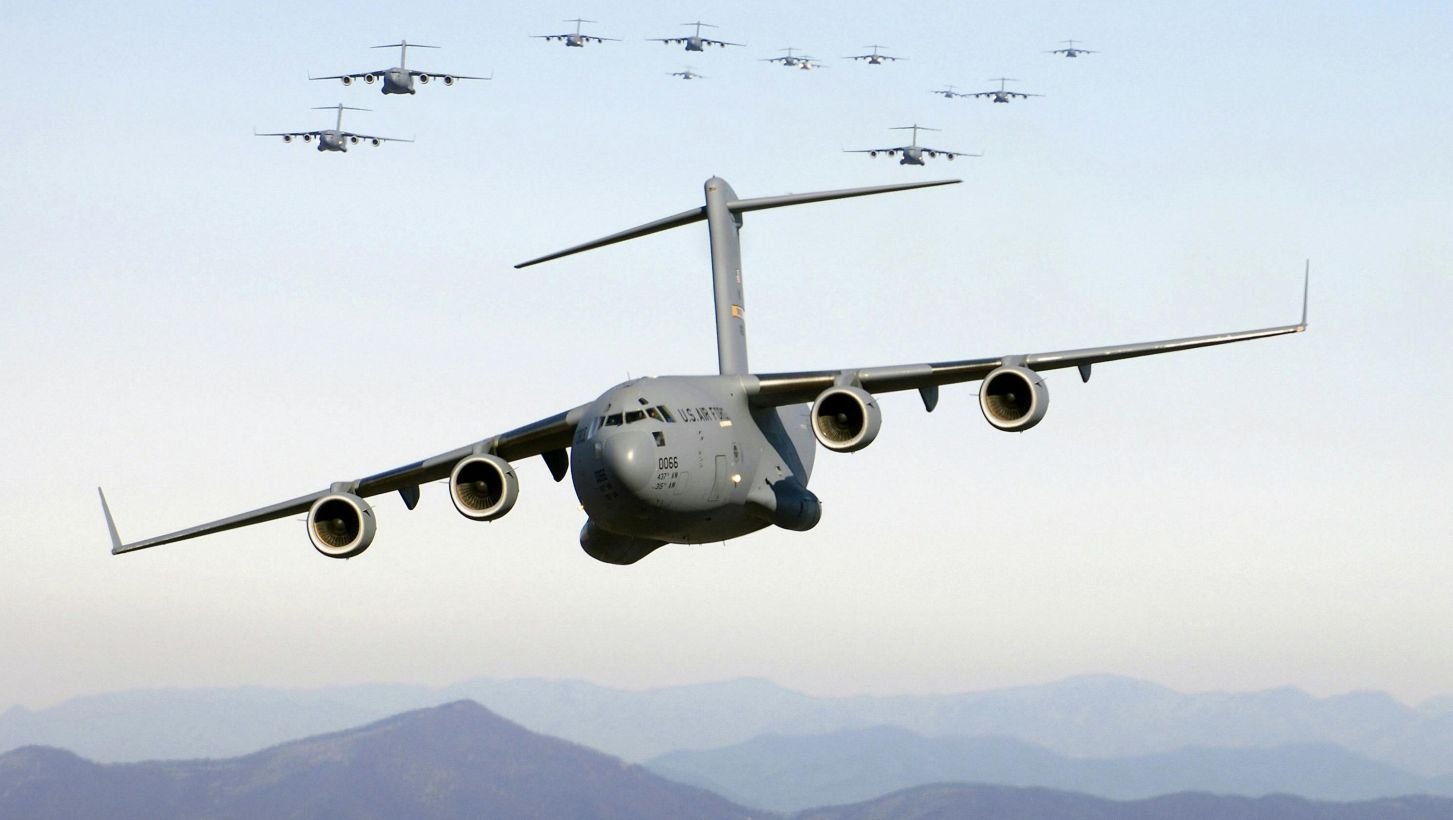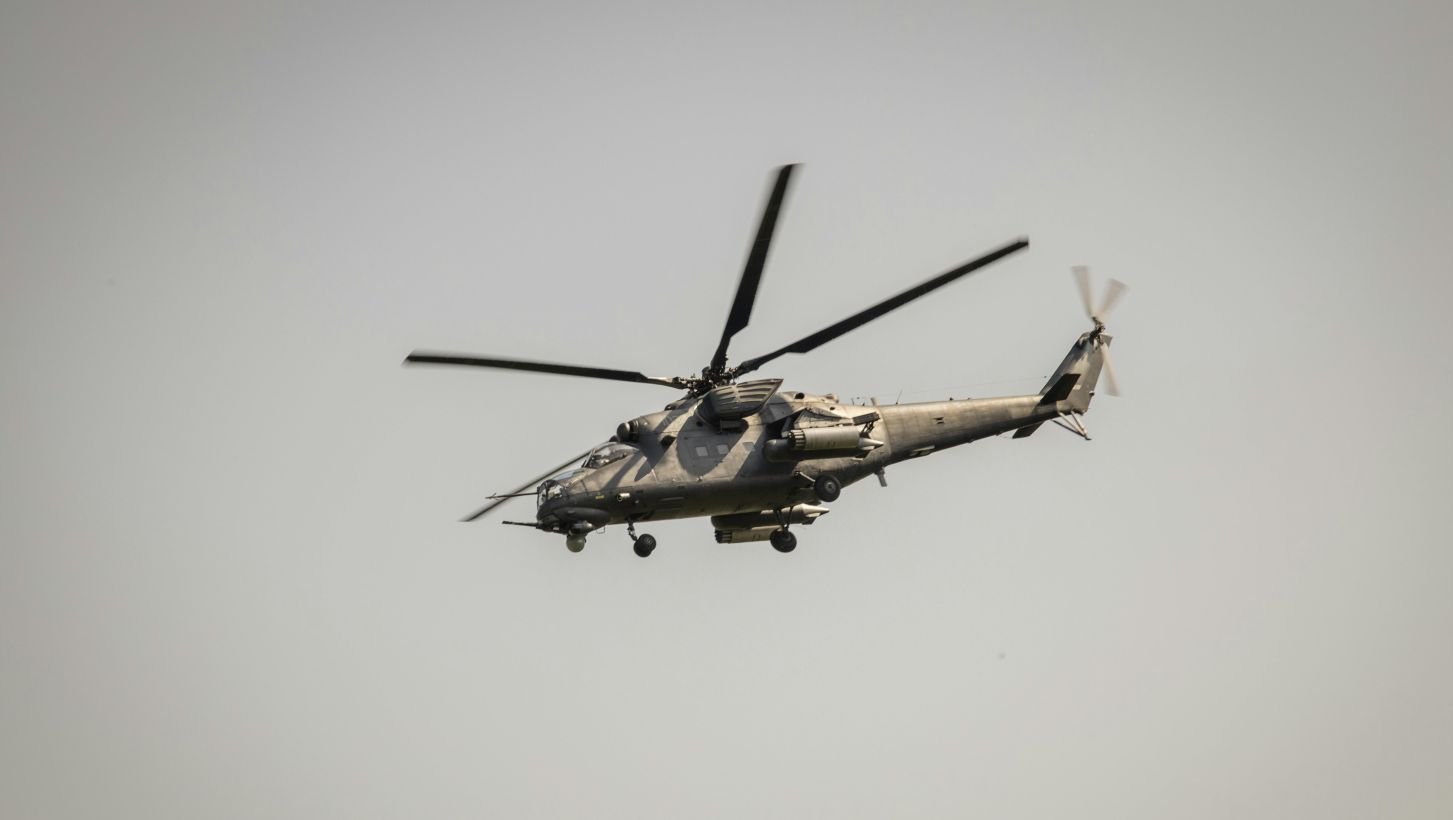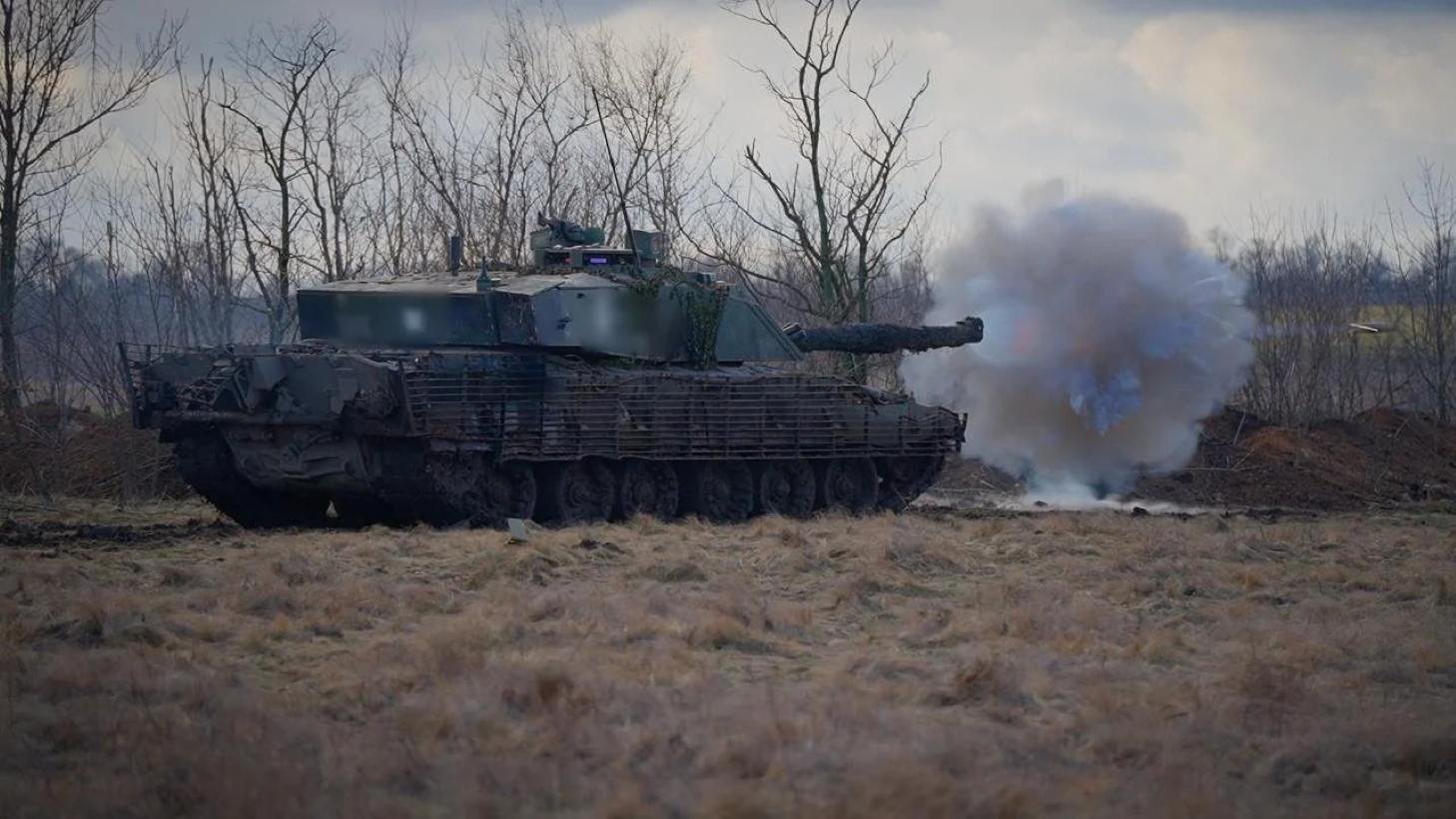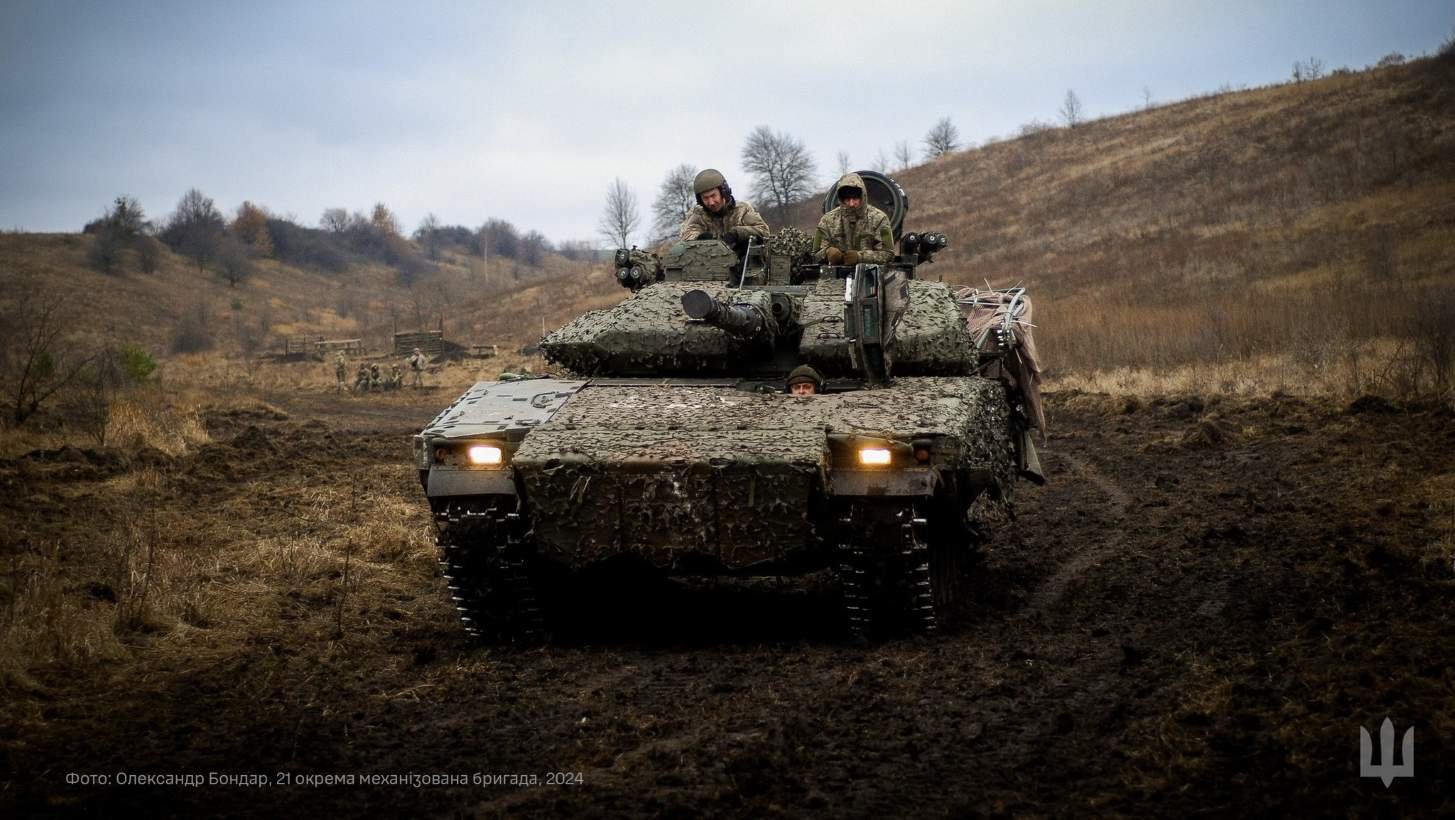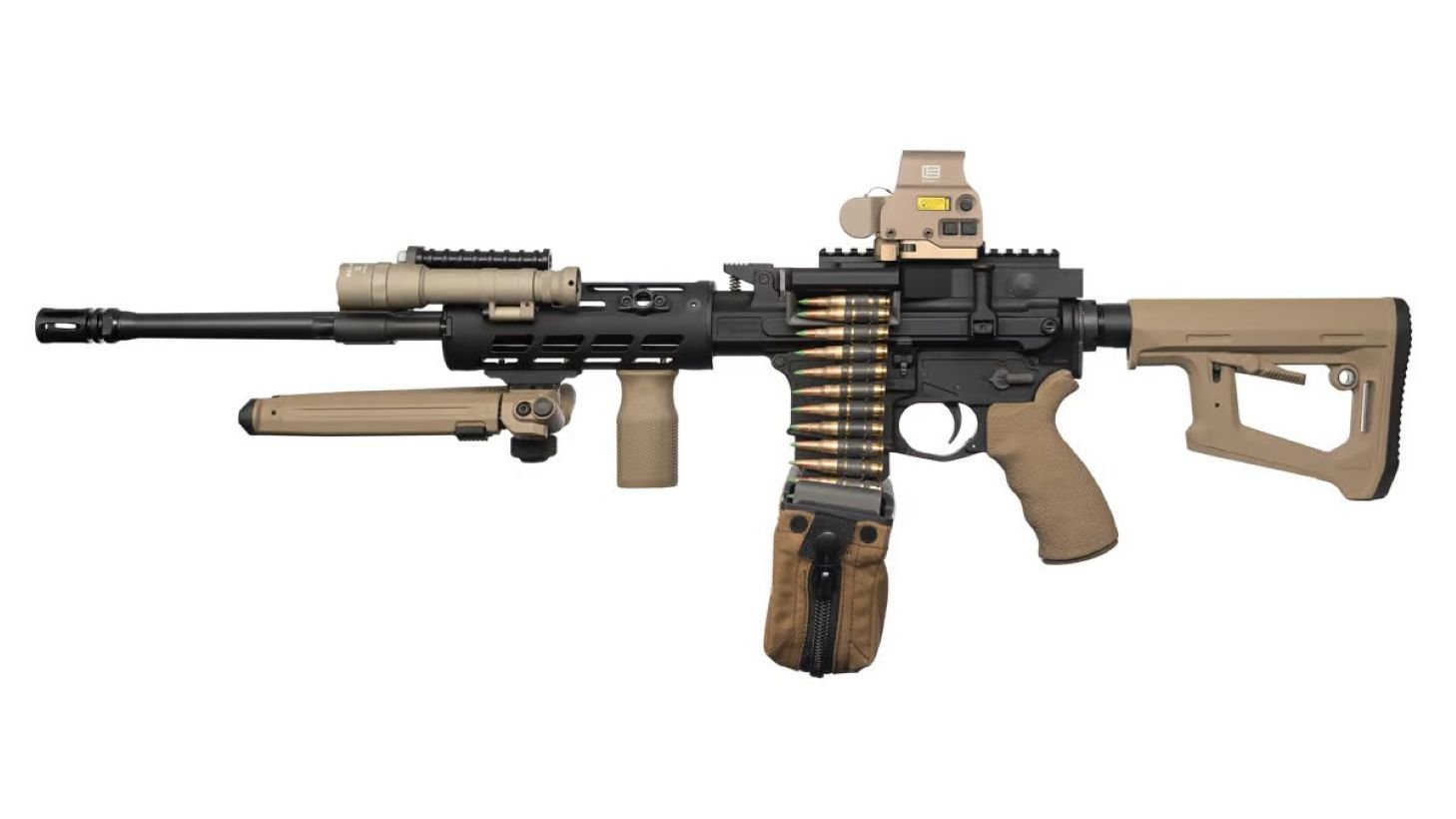-
Posts
790 -
Joined
-
Last visited
Content Type
Profiles
Uncrowned Armory News
Prepping Cookbook
Conspiracy Theories
Uncrowned Tactical Sports News
Prepping
Forums
Events
Everything posted by Uncrowned Guard
-
U.S. Announces Monumental $725 Million Aid for Ukraine The U.S. has committed to delivering a sizable $725 million aid package to Ukraine, as confirmed by Secretary of State Antony Blinken on December 2. The development represents a strategic effort from President Joe Biden's administration to bolster Ukraine's resistance against Russian invasions before the transition of power in early 2023 takes place. Blinken declared, "Today is the day we extend an additional $725 million in military aid and equipment to Ukraine for their defense." Over 50 nations join the U.S. in unwavering support of Ukraine. The Aid Package: Missiles, Artillery, Drones, and More The aid package is inclusive of Stinger missiles, High Mobility Artillery Rocket Systems (HIMARS) ammunition, drones, and landmines among other key military apparatus. The inclusion of landmines marks a significant shift as the U.S. has not exported such devices in decades. However, according to reports, Russian forces have deployed landmines liberally along the front lines, and Kyiv has been requesting them since the full-scale invasion by Russia in 2022. These "non-persistent" landmines have been designed with a limited power system and deactivate after a short period, assuaging long-term civilian risks compared to older, more hazardous landmines. Mining the Powers of Presidential Drawdown Authority This substantial aid package also signals an elevation in the utilization of the Presidential Drawdown Authority (PDA), which allows the U.S. to move weapons from existing stockpiles to allies facing urgent threats. With an estimated $4 billion to $5 billion in PDA funding presently authorized by Congress, it is expected that President Biden will allocate more assistance to Ukraine before Republican President-elect Donald Trump assumes office on January 20, 2023. Other Recent Developments: Germany and Russia in the Mix German Chancellor Olaf Scholz, in his December 2 visit to Kyiv, announced his country's commitment to condoning Ukraine, asserting that Germany is, and will remain, the country's strongest ally in Europe. In addition to pledging an extra €650 million ($680 million) in military aid during December, Scholz criticized Friedrich Merz, the CDU/CSU party leader, for his willingness to provide Taurus missiles to Ukraine—an action that Scholz cautioned could invite unnecessary risk to Germany's safety. Meanwhile, Russia claimed that it has trained a reserve force of 300,000 soldiers, ready to join the regiments currently battling in Ukraine. This proclamation came even as reports suggest Russia's push into eastern Ukraine is accelerating despite purported record losses. However, the authenticity of this claim, like the extent of Russia's losses, could not be independently determined, calling into question the veracity of these statements. View full article
-
- ukraine aid
- u.s. foreign policy
- (and 3 more)
-
Trump’s Ultimatum to Hamas Over Hostage Release: A Havoc to Unleash Donald Trump, the President-elect, issued a stern warning to Hamas on Monday, insisting a severe reprisal would befall the terror organization if the remaining hostages seized during the devastating October 7, 2023 attacks are not set free before his inauguration day. Elaborating further during his statement on Truth Social, Trump expressed the global concern and the vehement wave of discussions surrounding the Middle Eastern hostage crisis. He cautioned the individuals responsible for these abductions, "Please let this TRUTH serve to represent that if the hostages are not released prior to January 20, 2025—the day I honoredly resume my Presidential obligations—there will be AN UNPRECEDENTED HAVOC to be wrought in the Middle East." Trump's statement signaled a significant shift from diplomatic discussion to definitive action. Reaction From Israeli Presidency Israeli President Isaac Herzog publicly voiced his appreciation for Trump's firm stance on the matter, taking to social media platform X, to pen, “Thank you and bless you Mr. President-elect @realDonaldTrump. We ardently await the return of our kin.” The Death of IDF Soldier Omer Neutra and Reaction from His Parents Just a few days earlier, the Israeli government had confirmed the tragic demise of IDF soldier Omer Neutra, a native of New York. The announcement brought heartbreak to his parents, Ronen and Orna—the couple had previously pled for their son’s release at the year's Republican National Convention. Despite their personal loss, the couple remains highly involved in advocacy for the release of the hostages, becoming one of the most vocal families to do so. President Joe Biden extended his solidarity to the families of hostages iterating, “To all the families of those still held hostage: We see you. We are with you. And I will not stop working to bring your loved ones back home where they belong.” The Hostage Crisis and Botched Negotiations As per the latest reports received, Hamas circulated a coerced video featuring another Israeli-American hostage, 20-year-old Edan Alexander. He was seen imploring Trump to broker a deal that ensures the safe return of him and his fellow captives. The hostage abduction en masse had unfolded during a deadly attack on Israel back in 2023 that resulted in the single most violent day for the Jewish community since the Holocaust. Out of the initial figure of 250 hostages, approximately 100 are believed to have survived to date. The current administration’s diplomatic efforts to resolve the crisis, backed by Egypt, Qatar, and other international actors, have precipitated underwhelming results. This inefficacy has budded new hope among allies in Trump's cogent and unambiguous stance, which comes in stark contrast to the deemed soft and ineffective previous negotiation strategies.
-
- middle east
- trump foreign policy
- (and 3 more)
-
Trump’s Ultimatum to Hamas Over Hostage Release: A Havoc to Unleash Donald Trump, the President-elect, issued a stern warning to Hamas on Monday, insisting a severe reprisal would befall the terror organization if the remaining hostages seized during the devastating October 7, 2023 attacks are not set free before his inauguration day. Elaborating further during his statement on Truth Social, Trump expressed the global concern and the vehement wave of discussions surrounding the Middle Eastern hostage crisis. He cautioned the individuals responsible for these abductions, "Please let this TRUTH serve to represent that if the hostages are not released prior to January 20, 2025—the day I honoredly resume my Presidential obligations—there will be AN UNPRECEDENTED HAVOC to be wrought in the Middle East." Trump's statement signaled a significant shift from diplomatic discussion to definitive action. Reaction From Israeli Presidency Israeli President Isaac Herzog publicly voiced his appreciation for Trump's firm stance on the matter, taking to social media platform X, to pen, “Thank you and bless you Mr. President-elect @realDonaldTrump. We ardently await the return of our kin.” The Death of IDF Soldier Omer Neutra and Reaction from His Parents Just a few days earlier, the Israeli government had confirmed the tragic demise of IDF soldier Omer Neutra, a native of New York. The announcement brought heartbreak to his parents, Ronen and Orna—the couple had previously pled for their son’s release at the year's Republican National Convention. Despite their personal loss, the couple remains highly involved in advocacy for the release of the hostages, becoming one of the most vocal families to do so. President Joe Biden extended his solidarity to the families of hostages iterating, “To all the families of those still held hostage: We see you. We are with you. And I will not stop working to bring your loved ones back home where they belong.” The Hostage Crisis and Botched Negotiations As per the latest reports received, Hamas circulated a coerced video featuring another Israeli-American hostage, 20-year-old Edan Alexander. He was seen imploring Trump to broker a deal that ensures the safe return of him and his fellow captives. The hostage abduction en masse had unfolded during a deadly attack on Israel back in 2023 that resulted in the single most violent day for the Jewish community since the Holocaust. Out of the initial figure of 250 hostages, approximately 100 are believed to have survived to date. The current administration’s diplomatic efforts to resolve the crisis, backed by Egypt, Qatar, and other international actors, have precipitated underwhelming results. This inefficacy has budded new hope among allies in Trump's cogent and unambiguous stance, which comes in stark contrast to the deemed soft and ineffective previous negotiation strategies. View full article
-
- middle east
- trump foreign policy
- (and 3 more)
-
Fresh Offensive by Insurgents Accelerates Russian Aid to Syria In a rapidly changing battle scenario in Syria, Russia has committed to expedite additional military assistance. This urgent action comes as the Assad regime grapples with a sudden and ruthless offensive unleashed by insurgent forces. This commitment from Russia is slated to materialize within an upcoming 72-hour window, according to verified sources. Changing Battle Lines and Strategic Alternations The pledge has been triggered by a scenario of swift changes on the ground, with the insurgent forces making notable advancements in the recent past, cite two military personnel. This fresh wave of aggression on the part of rebel forces, initially triggered earlier this week, has led to the overtaking of various previously government-controlled towns, with the insurgents surging towards the crucial city of Aleppo. Such strategic movements pose the most impactful insurgent-led threat to the city since it was reclaimed by government forces (aided by Russia and Iran) almost ten years in the past. This series of events paints a grave picture for the Assad regime, at the same time, underlining the formidable resilience of the rebel groups in spite of the evolving regional canvas. Implications of Intensifying Conflict and Russia's Role Increased turmoil led to the Syrian authorities enforcing a stringent closure of the Aleppo International Airport and all connecting roadways into the city, corroborate the aforementioned military sources. This action on the part of the Syrian authorities is indicative of the severe threats posed by insurgent advances in close proximity to the city's boundaries. On the strategic front, the Syrian army has been given the mandate to carry out a ‘safe withdrawal’ from key sectors within Aleppo that have witnessed breaches by the insurgent forces. This appears to be a tactical retreat to mitigate further casualties while fortifying remaining positions as they await Russian reinforcements. Russia played a crucial role in the Syrian civil war by deploying its air force in support of Assad which began in 2015. In response to the current intensifying threat from the rebels, Russia has reassured its commitment by promising additional support with the primary aim of empowering the government forces to effectively resist the renewed assault. The specifics of the aid package remain undisclosed but it's expected to include augmented air and ground support considering the precarious situation around Aleppo. Geopolitical Dynamics and the Future of the Conflict Russia's continued military assistance underlines its unwavering dedication to preserving its influence in Syria while simultaneously countering any destabilizing maneuvers by opposition forces. Iran, another key supporter of Assad, is anticipated to sustain their logistical and military support. The unforeseen aggressive surge by the insurrectionist forces underscores the unpredictable and tumultuous nature of Syria's decade-long conflict, where control over territories often transgresses notwithstanding the involvement of major foreign powers. This rebel's advance is set against a backdrop of a broader regional shift which includes fluctuating alliances and evolving dynamics within neighboring nations, which might have spurred the opposition forces' courage and tenacity.
-
- syria conflict
- russian military aid
- (and 3 more)
-
Fresh Offensive by Insurgents Accelerates Russian Aid to Syria In a rapidly changing battle scenario in Syria, Russia has committed to expedite additional military assistance. This urgent action comes as the Assad regime grapples with a sudden and ruthless offensive unleashed by insurgent forces. This commitment from Russia is slated to materialize within an upcoming 72-hour window, according to verified sources. Changing Battle Lines and Strategic Alternations The pledge has been triggered by a scenario of swift changes on the ground, with the insurgent forces making notable advancements in the recent past, cite two military personnel. This fresh wave of aggression on the part of rebel forces, initially triggered earlier this week, has led to the overtaking of various previously government-controlled towns, with the insurgents surging towards the crucial city of Aleppo. Such strategic movements pose the most impactful insurgent-led threat to the city since it was reclaimed by government forces (aided by Russia and Iran) almost ten years in the past. This series of events paints a grave picture for the Assad regime, at the same time, underlining the formidable resilience of the rebel groups in spite of the evolving regional canvas. Implications of Intensifying Conflict and Russia's Role Increased turmoil led to the Syrian authorities enforcing a stringent closure of the Aleppo International Airport and all connecting roadways into the city, corroborate the aforementioned military sources. This action on the part of the Syrian authorities is indicative of the severe threats posed by insurgent advances in close proximity to the city's boundaries. On the strategic front, the Syrian army has been given the mandate to carry out a ‘safe withdrawal’ from key sectors within Aleppo that have witnessed breaches by the insurgent forces. This appears to be a tactical retreat to mitigate further casualties while fortifying remaining positions as they await Russian reinforcements. Russia played a crucial role in the Syrian civil war by deploying its air force in support of Assad which began in 2015. In response to the current intensifying threat from the rebels, Russia has reassured its commitment by promising additional support with the primary aim of empowering the government forces to effectively resist the renewed assault. The specifics of the aid package remain undisclosed but it's expected to include augmented air and ground support considering the precarious situation around Aleppo. Geopolitical Dynamics and the Future of the Conflict Russia's continued military assistance underlines its unwavering dedication to preserving its influence in Syria while simultaneously countering any destabilizing maneuvers by opposition forces. Iran, another key supporter of Assad, is anticipated to sustain their logistical and military support. The unforeseen aggressive surge by the insurrectionist forces underscores the unpredictable and tumultuous nature of Syria's decade-long conflict, where control over territories often transgresses notwithstanding the involvement of major foreign powers. This rebel's advance is set against a backdrop of a broader regional shift which includes fluctuating alliances and evolving dynamics within neighboring nations, which might have spurred the opposition forces' courage and tenacity. View full article
-
- syria conflict
- russian military aid
- (and 3 more)
-
Sweeping Raids on Major Moscow Nightclubs Conducted by Russian Police Late into the night on Friday, a coordinated series of raids disrupted three of Moscow's most frequented nightclubs. Russian authorities descended upon these venues, detaining hundreds of male patrons and transporting them to military conscription offices. The establishments targeted - Simachev, Mutabor/ARMA, and Mono - serve as the vibrant heart of Moscow's nightlife scene. These coordinated strikes - initiated around 2 a.m. and continuing for several hours - sent seismic shockwaves through the city's club-goers and locals alike. https://x.com/igorsushko/status/1862732460192313745 Shocking Scenes and Growing Concerns Over Manpower Shortages Eyewitness accounts painted a vividly unsettling scene, as a shockingly substantial fleet of police vehicles, including paddy wagons, converged at these clubs' surroundings. In lockstep, officers, with police K9 units in tow, proceeded to infiltrate the establishments. These scenes were characterized by chaos as groups were cynically escorted out, primarily focusing on male patrons. These men were detained in large numbers and subsequently railed off to local military conscription offices. Female club-goers were spared, though not entirely, as their passports were photographed before being released. The prolonged hours of these raids and the heavy-handed measures wielded have sparked concern amongst local communities and human rights advocates alike. There's growing concern over this forceful targeting of young men for military conscription. It unsettlingly underlines the aggressive lengths taken by the Russian government, grappling with manpower shortages, while its military operations persist. This round-up of potential soldiers hints at an immediate call-up for the detainees following the government's concerted crackdown to bolster its armed forces. Stepping Up Conscription Efforts Amidst Military Obligations "Police vehicles were constantly taking people away," narrated an eyewitness, commenting on the arrival and departure of multiple paddy wagons filled with detainees. These accounts shed light on the systemic drive to corral individuals deemed eligible for military service, showing little heed to their personal plans or justifications. These widespread raids come amidst growing pressures on the Putin regime to bolster its forces as Russian military operations continue unabated. Indications of the Kremlin grappling with fulfilling manpower demands have been growing in recent months. There has been an upswing in conscription efforts across the country concurrently. The targeting of Moscow's high-profile entertainment venues through raids underscores the heightened intensity of these recruitment efforts.
-
- moscow nightclubs
- police raids
- (and 3 more)
-
Sweeping Raids on Major Moscow Nightclubs Conducted by Russian Police Late into the night on Friday, a coordinated series of raids disrupted three of Moscow's most frequented nightclubs. Russian authorities descended upon these venues, detaining hundreds of male patrons and transporting them to military conscription offices. The establishments targeted - Simachev, Mutabor/ARMA, and Mono - serve as the vibrant heart of Moscow's nightlife scene. These coordinated strikes - initiated around 2 a.m. and continuing for several hours - sent seismic shockwaves through the city's club-goers and locals alike. https://x.com/igorsushko/status/1862732460192313745 Shocking Scenes and Growing Concerns Over Manpower Shortages Eyewitness accounts painted a vividly unsettling scene, as a shockingly substantial fleet of police vehicles, including paddy wagons, converged at these clubs' surroundings. In lockstep, officers, with police K9 units in tow, proceeded to infiltrate the establishments. These scenes were characterized by chaos as groups were cynically escorted out, primarily focusing on male patrons. These men were detained in large numbers and subsequently railed off to local military conscription offices. Female club-goers were spared, though not entirely, as their passports were photographed before being released. The prolonged hours of these raids and the heavy-handed measures wielded have sparked concern amongst local communities and human rights advocates alike. There's growing concern over this forceful targeting of young men for military conscription. It unsettlingly underlines the aggressive lengths taken by the Russian government, grappling with manpower shortages, while its military operations persist. This round-up of potential soldiers hints at an immediate call-up for the detainees following the government's concerted crackdown to bolster its armed forces. Stepping Up Conscription Efforts Amidst Military Obligations "Police vehicles were constantly taking people away," narrated an eyewitness, commenting on the arrival and departure of multiple paddy wagons filled with detainees. These accounts shed light on the systemic drive to corral individuals deemed eligible for military service, showing little heed to their personal plans or justifications. These widespread raids come amidst growing pressures on the Putin regime to bolster its forces as Russian military operations continue unabated. Indications of the Kremlin grappling with fulfilling manpower demands have been growing in recent months. There has been an upswing in conscription efforts across the country concurrently. The targeting of Moscow's high-profile entertainment venues through raids underscores the heightened intensity of these recruitment efforts. View full article
-
- moscow nightclubs
- police raids
- (and 3 more)
-
Significant Minority of Russians Approve of Nuclear Actions on Ukraine A startling revelation from Alexey Levinson, the head of the sociocultural research department at the Russian independent polling organization Levada Center, shows that roughly 39% of Russians believe a nuclear strike on Ukraine can be justified amidst the ongoing conflict. This controversial insight was shared by Levinson during a recent conference on November 29. The Growing Acceptance of Nuclear Actions According to unpublished data from a recent poll conducted by the Levada Center, the number of Russians endorsing potential nuclear actions against Ukraine has reportedly seen an incremental rise, hinting at a disturbing progression in public sentiment as the country's nucleated threats escalate. The data underscores a momentous shift in Russia's nuclear agenda. In November, President Vladimir Putin authorized an updated nuclear doctrine for the country, alluding to more attacks following the deployment of the nuclear-capable intermediate-range ballistic missile "Oreshnik" on Ukraine, on November 21. These nuclear threats, however, despite continuously looming over Ukraine and the West since Russia's full-scale invasion in 2022, have not yet been actualized. Even so, Putin's continued discourse around nuclear strikes appears to have a profound impact on national sentiment. As per Levinson, the ongoing talks have gradually swelled the number of Russians accepting these as not only passable but potentially morally justified. A Dip in Russian Opposition to Nuclear Strikes Challenging common presumptions, Levada Center's polls observed a drop in the number of Russians opposed to nuclear actions, from 52% in June to 45% in November. These polls, executed throughout the conflict, also revealed a seemingly unwavering majority of Russians supporting Putin and his actions against Ukraine. They firmly believe their country is moving down a righteous path, even as it continues its aggressive war stance against Ukraine.
-
Significant Minority of Russians Approve of Nuclear Actions on Ukraine A startling revelation from Alexey Levinson, the head of the sociocultural research department at the Russian independent polling organization Levada Center, shows that roughly 39% of Russians believe a nuclear strike on Ukraine can be justified amidst the ongoing conflict. This controversial insight was shared by Levinson during a recent conference on November 29. The Growing Acceptance of Nuclear Actions According to unpublished data from a recent poll conducted by the Levada Center, the number of Russians endorsing potential nuclear actions against Ukraine has reportedly seen an incremental rise, hinting at a disturbing progression in public sentiment as the country's nucleated threats escalate. The data underscores a momentous shift in Russia's nuclear agenda. In November, President Vladimir Putin authorized an updated nuclear doctrine for the country, alluding to more attacks following the deployment of the nuclear-capable intermediate-range ballistic missile "Oreshnik" on Ukraine, on November 21. These nuclear threats, however, despite continuously looming over Ukraine and the West since Russia's full-scale invasion in 2022, have not yet been actualized. Even so, Putin's continued discourse around nuclear strikes appears to have a profound impact on national sentiment. As per Levinson, the ongoing talks have gradually swelled the number of Russians accepting these as not only passable but potentially morally justified. A Dip in Russian Opposition to Nuclear Strikes Challenging common presumptions, Levada Center's polls observed a drop in the number of Russians opposed to nuclear actions, from 52% in June to 45% in November. These polls, executed throughout the conflict, also revealed a seemingly unwavering majority of Russians supporting Putin and his actions against Ukraine. They firmly believe their country is moving down a righteous path, even as it continues its aggressive war stance against Ukraine. View full article
-
Rising Casualties: Russian Troop Losses in Ukraine Reaches a New High In an authoritative disclosure made by Kyiv on November 29, Russian daily losses in the Ukraine conflict surpassed 2,000 for the first time. According to Ukraine's Armed Forces General Staff, Moscow saw 2,030 men fall over a single day. The figure trumps the previous record of 1,950 set earlier in the month, bringing the total toll to 738,660. Without distinction between dead or wounded, these figures offer an insight that includes deceased, incapacitated, missing, and captured soldiers. This data corresponds with Western nations' projections while underscoring the extensive scale of Russia's involvement in Ukraine. Ukraine's Underreported Casualties and the War's Significant Impact While Ukraine has hesitated to reveal the full extent of its military casualties, President Volodymyr Zelensky acknowledged in February that the number of Ukrainian fighters killed surpassed 31,000. Notwithstanding, estimates published by The Economist on November 26 suggest a higher figure, stating that the full-scale war claimed between 60,000 to 100,000 Ukrainian soldiers, with another 400,000 severely injured, preventing them from further participation in the conflict. Comparative analyses by The Economist revealed both Russia and Ukraine lost a larger portion of their population than the United States lost during the combined Korean and Vietnam wars, suggesting a dire impact. Roughly one in 20 Ukrainian men eligible for service have either been killed or injured due to this war. Pressures on the Battlefield and Homefront Further revealing the cloak-and-dagger nature of casualty numbers, both Kyiv and Moscow have been remarkably discreet about their losses. According to the most recent data available, by September 2022, Russian authorities reported a total of 5,937 fallen soldiers. Regardless of the mounting losses, Russian forces continue to exert pressure across the front lines, aiming to reclaim territory lost to Ukraine in Kursk Oblast before Donald Trump’s inauguration on January 20. In view of this, a British defense intelligence assessment warns that Russia is likely to intensify drone attacks on Ukrainian positions, launching from new sites near the border. It also details concerns of a significant escalation in the war as "tens of thousands of enemy soldiers from the best Russian shock units” are targeting Ukrainian forces to push them out of the Russian enclave. Simultaneously, Russia is grappling with economic challenges. This week, the Russian ruble’s purchasing power nosedived to its lowest since March 2022, as the financial aftermath of the full-scale invasion of Ukraine becomes increasingly visible. The Cost of War: Economic Struggles and Dire Prospects Russia's escalating war expenditure has driven up inflation, causing Russia's Central Bank to increase its interest rate to 21 percent, a high not seen since the early 2000s. Meanwhile, the brutal battlefield conditions are grimly summarized by Estonian analyst Artur Rehi, who calculates that a new recruit in the Russian armed forces has a one-month life expectancy after signing up for the war in Ukraine. These grim figures, coupled with the devastating economic impact, signify a bleak outlook for Russia in its ongoing Ukrainian conflict.
-
- russia-ukraine war
- military casualties
- (and 3 more)
-
Rising Casualties: Russian Troop Losses in Ukraine Reaches a New High In an authoritative disclosure made by Kyiv on November 29, Russian daily losses in the Ukraine conflict surpassed 2,000 for the first time. According to Ukraine's Armed Forces General Staff, Moscow saw 2,030 men fall over a single day. The figure trumps the previous record of 1,950 set earlier in the month, bringing the total toll to 738,660. Without distinction between dead or wounded, these figures offer an insight that includes deceased, incapacitated, missing, and captured soldiers. This data corresponds with Western nations' projections while underscoring the extensive scale of Russia's involvement in Ukraine. Ukraine's Underreported Casualties and the War's Significant Impact While Ukraine has hesitated to reveal the full extent of its military casualties, President Volodymyr Zelensky acknowledged in February that the number of Ukrainian fighters killed surpassed 31,000. Notwithstanding, estimates published by The Economist on November 26 suggest a higher figure, stating that the full-scale war claimed between 60,000 to 100,000 Ukrainian soldiers, with another 400,000 severely injured, preventing them from further participation in the conflict. Comparative analyses by The Economist revealed both Russia and Ukraine lost a larger portion of their population than the United States lost during the combined Korean and Vietnam wars, suggesting a dire impact. Roughly one in 20 Ukrainian men eligible for service have either been killed or injured due to this war. Pressures on the Battlefield and Homefront Further revealing the cloak-and-dagger nature of casualty numbers, both Kyiv and Moscow have been remarkably discreet about their losses. According to the most recent data available, by September 2022, Russian authorities reported a total of 5,937 fallen soldiers. Regardless of the mounting losses, Russian forces continue to exert pressure across the front lines, aiming to reclaim territory lost to Ukraine in Kursk Oblast before Donald Trump’s inauguration on January 20. In view of this, a British defense intelligence assessment warns that Russia is likely to intensify drone attacks on Ukrainian positions, launching from new sites near the border. It also details concerns of a significant escalation in the war as "tens of thousands of enemy soldiers from the best Russian shock units” are targeting Ukrainian forces to push them out of the Russian enclave. Simultaneously, Russia is grappling with economic challenges. This week, the Russian ruble’s purchasing power nosedived to its lowest since March 2022, as the financial aftermath of the full-scale invasion of Ukraine becomes increasingly visible. The Cost of War: Economic Struggles and Dire Prospects Russia's escalating war expenditure has driven up inflation, causing Russia's Central Bank to increase its interest rate to 21 percent, a high not seen since the early 2000s. Meanwhile, the brutal battlefield conditions are grimly summarized by Estonian analyst Artur Rehi, who calculates that a new recruit in the Russian armed forces has a one-month life expectancy after signing up for the war in Ukraine. These grim figures, coupled with the devastating economic impact, signify a bleak outlook for Russia in its ongoing Ukrainian conflict. View full article
-
- russia-ukraine war
- military casualties
- (and 3 more)
-

Zelensky Appoints New Military Leaders Amid Rising Tensions
Uncrowned Guard posted an article in Ongoing Conflicts
Zelensky Announces New Leadership for Ukraine Ground Forces In news from the presidential office, President Volodymyr Zelensky has ushered in a new era for the Ground Forces of Ukraine by appointing General Mykhailo Drapatyi as the new commander. This significant announcement came to light on November 29th. Transition of Power in the Ground Forces The command has changed hands from Oleksandr Pavliuk, who has held the post from February 11, 2024, following the promotion of Oleksandr Syrskyi as the commander-in-chief of Ukraine's Armed Forces. The specifics surrounding this leadership transition remain somewhat obscure. However, President Zelensky took to social media, lauding Major General Drapatyi's military acumen. He was recognized for the effective organization of defense in the contested Kharkiv sector and for his crucial role in disrupting the Russian offensive. Historical Highlights of Drapatyi's Decorated Career At 42, Drapatyi is a seasoned commander. His notable achievements include leading Ukraine's 58th Separate Motorized Infantry Brigade between 2016 and 2019. His leadership abilities were prominent during the liberating operation of Mariupol in Donetsk Oblast in 2014. Recent positions held by Drapatyi include overseeing the "Kharkiv" and "Luhansk" operational groups of troops since May, and the tactical group of forces since September. Additionally, he was designated as the deputy chief of the General Staff in February. New Deputy Commander-in-Chief for Ukraine's Armed Forces The reshuffling process also witnessed the appointment of Oleh Apostol, former commander of Ukraine's 95th Separate Air Assault Brigade, as the new deputy commander-in-chief of the Armed Forces. Among Apostol's mission-critical accomplishments is his participation in combat operations in east Ukraine after the Russian invasion in 2014. He has also significantly contributed to the liberation of settlements in southern Mykolaiv Oblast since the escalation of war in 2022. For his exceptional valor and contributions to defense, Apostol is an honored recipient of the Hero of Ukraine award. Strategic Overhaul Amid Military Tension This significant military rearrangement precedes critical challenges for Ukraine, with Moscow's forces pushing boundaries with their most rapid advancements in recent months, and North Korean troops currently stationed in Russia's Kursk Oblast. As he announced the leadership changes, President Zelensky added, "The Ukrainian army needs internal changes to fully achieve the goals of our state," signaling both the necessity and timeliness of the reshuffle.-
- ukraine ground forces
- volodymyr zelensky
- (and 3 more)
-
Zelensky Announces New Leadership for Ukraine Ground Forces In news from the presidential office, President Volodymyr Zelensky has ushered in a new era for the Ground Forces of Ukraine by appointing General Mykhailo Drapatyi as the new commander. This significant announcement came to light on November 29th. Transition of Power in the Ground Forces The command has changed hands from Oleksandr Pavliuk, who has held the post from February 11, 2024, following the promotion of Oleksandr Syrskyi as the commander-in-chief of Ukraine's Armed Forces. The specifics surrounding this leadership transition remain somewhat obscure. However, President Zelensky took to social media, lauding Major General Drapatyi's military acumen. He was recognized for the effective organization of defense in the contested Kharkiv sector and for his crucial role in disrupting the Russian offensive. Historical Highlights of Drapatyi's Decorated Career At 42, Drapatyi is a seasoned commander. His notable achievements include leading Ukraine's 58th Separate Motorized Infantry Brigade between 2016 and 2019. His leadership abilities were prominent during the liberating operation of Mariupol in Donetsk Oblast in 2014. Recent positions held by Drapatyi include overseeing the "Kharkiv" and "Luhansk" operational groups of troops since May, and the tactical group of forces since September. Additionally, he was designated as the deputy chief of the General Staff in February. New Deputy Commander-in-Chief for Ukraine's Armed Forces The reshuffling process also witnessed the appointment of Oleh Apostol, former commander of Ukraine's 95th Separate Air Assault Brigade, as the new deputy commander-in-chief of the Armed Forces. Among Apostol's mission-critical accomplishments is his participation in combat operations in east Ukraine after the Russian invasion in 2014. He has also significantly contributed to the liberation of settlements in southern Mykolaiv Oblast since the escalation of war in 2022. For his exceptional valor and contributions to defense, Apostol is an honored recipient of the Hero of Ukraine award. Strategic Overhaul Amid Military Tension This significant military rearrangement precedes critical challenges for Ukraine, with Moscow's forces pushing boundaries with their most rapid advancements in recent months, and North Korean troops currently stationed in Russia's Kursk Oblast. As he announced the leadership changes, President Zelensky added, "The Ukrainian army needs internal changes to fully achieve the goals of our state," signaling both the necessity and timeliness of the reshuffle. View full article
-
- ukraine ground forces
- volodymyr zelensky
- (and 3 more)
-
Boris Johnson Advocates for European Peacekeepers in Ukraine The former British Prime Minister, Boris Johnson, suggested a multinational European peacekeeping force, inclusive of British troops, as an essential aspect of a possible peace deal in Ukraine, during a recent interview with The Telegraph’s Ukraine: The Latest podcast. Johnson emphasized that this move would not involve sending combat troops to engage Russian forces yet function as an instrumental means of monitoring and safeguarding the Ukrainian border. Shift in US's Ukraine Policy Anticipated Post Trump's Victory Anticipating Donald Trump's triumph in the 2024 elections and shifting policies surrounding Ukraine, the world leaders stand on uncertain ground. With no concrete information about Trump's Ukraine plans and his assertion to end the war within "24 hours", world leaders are led to consider various potential outcomes. A report by The Telegraph on November 7, citing three Trump aides, suggested possible deployment of British and European troops by Trump to maintain a buffer zone along the current Ukrainian frontline, constituting a part of his potential peace strategy. According to Boris Johnson, a Trump supporter, a European operation of this sort can't be envisaged without involving the British forces. He also mentioned that clear security guarantees should be outlined. The UK's Stance on Deploying Combat Troops in Ukraine Johnson's notion of deploying combat troops in Ukraine was countered by an earlier report suggesting discussions between the U.K. and France regarding sending soldiers or private defense contractors to Ukraine after Trump's election. But the UK's Foreign Secretary, David Lammy on Nov 26, clarified that London had no such intentions to dispatch military personnel into Ukraine. Johnson’s belief in the UK's moral obligation towards Ukraine, as a signatory of the 1994 Budapest Memorandum, extends to the fact that the agreement’s assurance to demilitarize Ukraine and strip it of its nuclear power has fallen short of defending Ukraine against Russian hostility. Extension of NATO Membership to Ukraine Johnson, a strong supporter of Ukraine, firmly upholds the extension of NATO membership to Ukraine, considering it the sole long-term solution to ensuring peace and stability. The reluctance of NATO countries to extend an invitation to Ukraine to join the military alliance has led Johnson to stress the importance of clearly defining the potential security guarantees for Kyiv in a peace agreement. Reflecting on the views of Ukrainian officials in the year-long peace negotiations, Boris Johnson emphasizes the necessity of concluding the war with discussions. Meanwhile, Ukrainian President Volodymyr Zelensky insists on striving for an end to the war through diplomatic means and anticipates a quicker resolution during Trump's administration.
-
- boris johnson
- ukraine peacekeepers
- (and 3 more)
-
Boris Johnson Advocates for European Peacekeepers in Ukraine The former British Prime Minister, Boris Johnson, suggested a multinational European peacekeeping force, inclusive of British troops, as an essential aspect of a possible peace deal in Ukraine, during a recent interview with The Telegraph’s Ukraine: The Latest podcast. Johnson emphasized that this move would not involve sending combat troops to engage Russian forces yet function as an instrumental means of monitoring and safeguarding the Ukrainian border. Shift in US's Ukraine Policy Anticipated Post Trump's Victory Anticipating Donald Trump's triumph in the 2024 elections and shifting policies surrounding Ukraine, the world leaders stand on uncertain ground. With no concrete information about Trump's Ukraine plans and his assertion to end the war within "24 hours", world leaders are led to consider various potential outcomes. A report by The Telegraph on November 7, citing three Trump aides, suggested possible deployment of British and European troops by Trump to maintain a buffer zone along the current Ukrainian frontline, constituting a part of his potential peace strategy. According to Boris Johnson, a Trump supporter, a European operation of this sort can't be envisaged without involving the British forces. He also mentioned that clear security guarantees should be outlined. The UK's Stance on Deploying Combat Troops in Ukraine Johnson's notion of deploying combat troops in Ukraine was countered by an earlier report suggesting discussions between the U.K. and France regarding sending soldiers or private defense contractors to Ukraine after Trump's election. But the UK's Foreign Secretary, David Lammy on Nov 26, clarified that London had no such intentions to dispatch military personnel into Ukraine. Johnson’s belief in the UK's moral obligation towards Ukraine, as a signatory of the 1994 Budapest Memorandum, extends to the fact that the agreement’s assurance to demilitarize Ukraine and strip it of its nuclear power has fallen short of defending Ukraine against Russian hostility. Extension of NATO Membership to Ukraine Johnson, a strong supporter of Ukraine, firmly upholds the extension of NATO membership to Ukraine, considering it the sole long-term solution to ensuring peace and stability. The reluctance of NATO countries to extend an invitation to Ukraine to join the military alliance has led Johnson to stress the importance of clearly defining the potential security guarantees for Kyiv in a peace agreement. Reflecting on the views of Ukrainian officials in the year-long peace negotiations, Boris Johnson emphasizes the necessity of concluding the war with discussions. Meanwhile, Ukrainian President Volodymyr Zelensky insists on striving for an end to the war through diplomatic means and anticipates a quicker resolution during Trump's administration. View full article
-
- boris johnson
- ukraine peacekeepers
- (and 3 more)
-

Zelensky Pushes New NATO Strategy Amid Ukraine Conflict
Uncrowned Guard posted an article in Ongoing Conflicts
Zelensky Advocates a New Approach to the War and NATO Membership In a revealing exchange with Sky News, Ukrainian President Volodymyr Zelensky put forth a proposal concerning Ukraine's potential membership in the North Atlantic Treaty Organization (NATO) and the ongoing conflict with Russia. He suggested an effective strategy to terminate the active hostilities would be for NATO to extend membership to the parts of the country under Kyiv's control. However, this invitation should acknowledge Ukraine's internationally accepted borders. Contours of Zelensky's Proposal "The way to halt the armed conflict would be for NATO to swiftly integrate the portions of Ukraine that are currently under our governance," said President Zelensky in the November 29 interview, implying that the country's subsequent goal would be to recover the other territories through diplomatic channels. To date, the president stated, such a suggestion has never been officially presented to the Kyiv government. However, the election of Donald Trump has instigated unpredictable elements into Ukraine's wartime efforts. Trump has voiced critiques about the military support the U.S, under Joe Biden's administration, has offered to Ukraine. Additional reports suggest that this could necessitate Ukraine forfeiting territories and suspending its NATO enrolment plans, at least for the time being. Contradictions with Previous Remarks and Current Situations These most recent comments from President Zelensky seem to slightly contradict his prior messages. Previously, he dismissed partial NATO membership for Ukraine as "nonsense," asserting that Ukraine would "never trade any status for any of our lands." His recent discussion with Sky News insinuates that those Ukrainian territories presently under Russian control would not be covered under NATO protection, as per his scenario. Areas such as Donetsk, Luhansk, Kherson, and Zaporizhzhia are partially occupied by Russian forces. Despite only controlling two out of the four regional capitals—Kherson and Zaporizhzhia—Russia asserts that it annexed these regions in 2022 in its entirety. Moreover, Moscow has full control over Ukraine's Crimean Peninsula. Throughout 2024, Ukraine found itself in a tough spot protecting its frontlines, particularly in the Donetsk Oblast, where Russia continually bolstered its offensive might. Despite applying for NATO membership as early as September 2022, Ukraine has yet to receive an official invite. Although the last two NATO summits raised hopes in Kyiv, the only concrete outcomes so far have been further steps toward deepening Ukraine-NATO cooperation and a declaration confirming the nation's irreversible path toward NATO membership.-
- ukraine
- nato membership
- (and 3 more)
-
Zelensky Advocates a New Approach to the War and NATO Membership In a revealing exchange with Sky News, Ukrainian President Volodymyr Zelensky put forth a proposal concerning Ukraine's potential membership in the North Atlantic Treaty Organization (NATO) and the ongoing conflict with Russia. He suggested an effective strategy to terminate the active hostilities would be for NATO to extend membership to the parts of the country under Kyiv's control. However, this invitation should acknowledge Ukraine's internationally accepted borders. Contours of Zelensky's Proposal "The way to halt the armed conflict would be for NATO to swiftly integrate the portions of Ukraine that are currently under our governance," said President Zelensky in the November 29 interview, implying that the country's subsequent goal would be to recover the other territories through diplomatic channels. To date, the president stated, such a suggestion has never been officially presented to the Kyiv government. However, the election of Donald Trump has instigated unpredictable elements into Ukraine's wartime efforts. Trump has voiced critiques about the military support the U.S, under Joe Biden's administration, has offered to Ukraine. Additional reports suggest that this could necessitate Ukraine forfeiting territories and suspending its NATO enrolment plans, at least for the time being. Contradictions with Previous Remarks and Current Situations These most recent comments from President Zelensky seem to slightly contradict his prior messages. Previously, he dismissed partial NATO membership for Ukraine as "nonsense," asserting that Ukraine would "never trade any status for any of our lands." His recent discussion with Sky News insinuates that those Ukrainian territories presently under Russian control would not be covered under NATO protection, as per his scenario. Areas such as Donetsk, Luhansk, Kherson, and Zaporizhzhia are partially occupied by Russian forces. Despite only controlling two out of the four regional capitals—Kherson and Zaporizhzhia—Russia asserts that it annexed these regions in 2022 in its entirety. Moreover, Moscow has full control over Ukraine's Crimean Peninsula. Throughout 2024, Ukraine found itself in a tough spot protecting its frontlines, particularly in the Donetsk Oblast, where Russia continually bolstered its offensive might. Despite applying for NATO membership as early as September 2022, Ukraine has yet to receive an official invite. Although the last two NATO summits raised hopes in Kyiv, the only concrete outcomes so far have been further steps toward deepening Ukraine-NATO cooperation and a declaration confirming the nation's irreversible path toward NATO membership. View full article
-
- ukraine
- nato membership
- (and 3 more)
-
Truce Breaks Nine-Year Impasse Between Israel and Hezbollah A ceasefire crafted to conclude an ongoing 13-month confrontation between Israel and the Lebanese militia, Hezbollah, is now operative. The deal, endorsed by France and the US, proposes a halt to violence in Lebanon, shielding Israel from aggressions staged by Hezbollah and other Lebanon-based militant groups. The agreement allows Hezbollah a span of 60 days to terminate its military presence in southern Lebanon. Concurrently, Israeli forces are assigned an identical period to retreat from the same region. A Prelude to Enduring Establish US President Joe Biden apprised the media by describing the ceasefire as a set-up envisaged for enduring cessation of hostilities. The 13-point agreement, signed between the governments of Israel and Lebanon – not involving Hezbollah – elucidates that the nations are inclined to devise conditions favorable for an enduring, comprehensive solution. Moreover, the Lebanese administration is deemed committed to warding off Hezbollah and other militias on Lebanese soil from initiating assaults against Israel. Similarly, Israel is set to refrain from taking offensive measures against Lebanon's civilian, military, or other state targets. The deal underscores the full implementation, without violation, of the UN Security Council resolution 1701, marking an end to the last war in 2006. Deployment Tactics and Future Challenges As President Biden announced that the seasoned militant infrastructure of Hezbollah in southern Lebanon will not be permitted to be reconstructed, the ceasefire protocol provides for the slow but steady retraction of Israeli troops to positions south of the Blue Line, following a 60-day period. Concurrently, the Lebanese army will mobilize in parallel to the positions. The Lebanese military is to disassemble all infrastructures and military positions, confiscating all unauthorized arms in the Southern Litani Area while also preventing the illicit ingress of weapons into Lebanon and disassembling any unauthorized weapon-producing facilities. However, the mandate for the Lebanese troops to enforce the ceasefire raises questions, and any face-off with Hezbollah could potentially heighten sectarian tension. The Lebanese army has expressed an inadequacy of resources – finance, manpower, and equipment – to realize their responsibilities. The deal indicates the US and France's intent to join hands with the global community to support and boost its natural capacities. The Watchful Eyes of Nations Overseas For the oversight of execution, the US and France have joined the pre-existing Tripartite Mechanism involving Unifil, the Israeli military, and the Lebanese army. The US will chair this reformed and amplified mechanism, with the mandate to surveil, certify, and aid in enforcing the mutual commitments. Both Israel and Lebanon will be obligated to report alleged contraventions to this mechanism.
-
Truce Breaks Nine-Year Impasse Between Israel and Hezbollah A ceasefire crafted to conclude an ongoing 13-month confrontation between Israel and the Lebanese militia, Hezbollah, is now operative. The deal, endorsed by France and the US, proposes a halt to violence in Lebanon, shielding Israel from aggressions staged by Hezbollah and other Lebanon-based militant groups. The agreement allows Hezbollah a span of 60 days to terminate its military presence in southern Lebanon. Concurrently, Israeli forces are assigned an identical period to retreat from the same region. A Prelude to Enduring Establish US President Joe Biden apprised the media by describing the ceasefire as a set-up envisaged for enduring cessation of hostilities. The 13-point agreement, signed between the governments of Israel and Lebanon – not involving Hezbollah – elucidates that the nations are inclined to devise conditions favorable for an enduring, comprehensive solution. Moreover, the Lebanese administration is deemed committed to warding off Hezbollah and other militias on Lebanese soil from initiating assaults against Israel. Similarly, Israel is set to refrain from taking offensive measures against Lebanon's civilian, military, or other state targets. The deal underscores the full implementation, without violation, of the UN Security Council resolution 1701, marking an end to the last war in 2006. Deployment Tactics and Future Challenges As President Biden announced that the seasoned militant infrastructure of Hezbollah in southern Lebanon will not be permitted to be reconstructed, the ceasefire protocol provides for the slow but steady retraction of Israeli troops to positions south of the Blue Line, following a 60-day period. Concurrently, the Lebanese army will mobilize in parallel to the positions. The Lebanese military is to disassemble all infrastructures and military positions, confiscating all unauthorized arms in the Southern Litani Area while also preventing the illicit ingress of weapons into Lebanon and disassembling any unauthorized weapon-producing facilities. However, the mandate for the Lebanese troops to enforce the ceasefire raises questions, and any face-off with Hezbollah could potentially heighten sectarian tension. The Lebanese army has expressed an inadequacy of resources – finance, manpower, and equipment – to realize their responsibilities. The deal indicates the US and France's intent to join hands with the global community to support and boost its natural capacities. The Watchful Eyes of Nations Overseas For the oversight of execution, the US and France have joined the pre-existing Tripartite Mechanism involving Unifil, the Israeli military, and the Lebanese army. The US will chair this reformed and amplified mechanism, with the mandate to surveil, certify, and aid in enforcing the mutual commitments. Both Israel and Lebanon will be obligated to report alleged contraventions to this mechanism. View full article
-
FightLite Introduces Raptor Belt-Fed AR Upper, Offering Enhanced Firepower FightLite, a prominent arms manufacturer, has expanded its remarkable product line with the launch of the new Raptor belt-fed 5.56 AR upper. This distinctive drop-in assembly aims to offer ease of use by being compatible with standard mil-spec AR15/M16/M4-pattern rifles. Features of the Raptor Belt-Fed AR Upper The remarkable Raptor belt-fed AR upper features a myriad of impressive specifications carefully devised to provide unparalleled functionality. The upper assembly boasts a self-regulating quick-change 16.25-inch barrel, a full-auto bolt carrier, and an aluminum handguard with relieving M-LOK slots. The highlight - is a dual-feed design versatility that accepts all AR-pattern magazines and M27-linked ammunition. Renowned for its precision-based manufacture, the Raptor feed tray is constructed from high-quality billet steel. Key components like the upper unit, the feed cover, and the charging handle are fashioned from 7075-T6 aluminum. Complementing its superior build, the upper assembly is finished with a classic manganese phosphate and black MIL-A8625F hard coat anodization. Being a short-stroke gas piston-operated system, the Raptor upper assembly comes chambered in 5.56x45mm NATO and supports an easy optic mounting operation. Among the various product accompaniments, customers will also receive a main action spring, a bolt catch, a carbine stock spacer, 100 M27 links, and a comprehensive operator’s manual. FightLite's introduction of the Raptor Belt-Fed AR Upper is largely seen as a continuance of the principles seen in their MCR uppers but further refined for AR platforms. Adapting to a Plethora of Tactical Situations FightLite's Raptor upper assembly has been engineered to seamlessly couple with any mil-spec AR-15/M16 lower - even those dating back to 1963, without the need for permanent modification. With such features, this assembly proves to be a highly versatile tool, capable of effectively managing a broad spectrum of tactical scenarios. The patented RAPTOR design provides users the luxury to switch between standard box type AR15/M16 magazines or M27 linked ammunition - thus, enhancing both performance and weapon flexibility. More impressively, the configuration can be effortlessly adjusted with no need for tools, thus saving invaluable time during mission-critical operations. This advanced technology and remarkable adaptability make the Raptor upper unit a highly recognized tool among responsible armed citizens, law enforcement, and professional security personnel. As for the cost, the Raptor belt-fed upper carries an initial asking price of $3,999.99, although FightLite has indicated a pending increase in the coming weeks.
-
FightLite Introduces Raptor Belt-Fed AR Upper, Offering Enhanced Firepower FightLite, a prominent arms manufacturer, has expanded its remarkable product line with the launch of the new Raptor belt-fed 5.56 AR upper. This distinctive drop-in assembly aims to offer ease of use by being compatible with standard mil-spec AR15/M16/M4-pattern rifles. Features of the Raptor Belt-Fed AR Upper The remarkable Raptor belt-fed AR upper features a myriad of impressive specifications carefully devised to provide unparalleled functionality. The upper assembly boasts a self-regulating quick-change 16.25-inch barrel, a full-auto bolt carrier, and an aluminum handguard with relieving M-LOK slots. The highlight - is a dual-feed design versatility that accepts all AR-pattern magazines and M27-linked ammunition. Renowned for its precision-based manufacture, the Raptor feed tray is constructed from high-quality billet steel. Key components like the upper unit, the feed cover, and the charging handle are fashioned from 7075-T6 aluminum. Complementing its superior build, the upper assembly is finished with a classic manganese phosphate and black MIL-A8625F hard coat anodization. Being a short-stroke gas piston-operated system, the Raptor upper assembly comes chambered in 5.56x45mm NATO and supports an easy optic mounting operation. Among the various product accompaniments, customers will also receive a main action spring, a bolt catch, a carbine stock spacer, 100 M27 links, and a comprehensive operator’s manual. FightLite's introduction of the Raptor Belt-Fed AR Upper is largely seen as a continuance of the principles seen in their MCR uppers but further refined for AR platforms. Adapting to a Plethora of Tactical Situations FightLite's Raptor upper assembly has been engineered to seamlessly couple with any mil-spec AR-15/M16 lower - even those dating back to 1963, without the need for permanent modification. With such features, this assembly proves to be a highly versatile tool, capable of effectively managing a broad spectrum of tactical scenarios. The patented RAPTOR design provides users the luxury to switch between standard box type AR15/M16 magazines or M27 linked ammunition - thus, enhancing both performance and weapon flexibility. More impressively, the configuration can be effortlessly adjusted with no need for tools, thus saving invaluable time during mission-critical operations. This advanced technology and remarkable adaptability make the Raptor upper unit a highly recognized tool among responsible armed citizens, law enforcement, and professional security personnel. As for the cost, the Raptor belt-fed upper carries an initial asking price of $3,999.99, although FightLite has indicated a pending increase in the coming weeks. View full article
-

$11M Verdict Fuels SIG Sauer P320 Safety Debate
Uncrowned Guard posted an article in Defense Industry
$11 Million Verdict Awarded Against SIG Sauer, Company Expresses Intent to Appeal In the legal sphere, the recent litigation surrounding SIG Sauer P320 has captured significant attention. A man was given an $11 million payout after his P320 reportedly went off while still in its holster. Yet, this snapshot captures just a portion of the entire narrative. Exploring the P320's Evolution and History Known for revered, hammer-fired pistol models such as the P226 and M11A1, SIG Sauer ventured into the world of striker-fired handguns later in their career. The disavowed P250 design emerged as a double-action-only polymer frame firearm equipped with a noticeably heavy trigger mechanism. Despite the discontinuation and eventual erasure of the P250 from the public's memory, it did not face any legal battles or pose safety concerns. Born out of the P250, the P320 shares aesthetically with its predecessor but possesses defining differences, such as the striker assembly shroud, unlike the P250's exposed hammer. The P320 quickly garnered a substantial base of users, with civilians and law enforcement both endorsing it. Its spotlight moment came when the US Army selected the M17/M18 series for its standard-issue handgun. Yet, the P320's design came under harsh criticism when one of the firearms discharged upon being dropped at a specific angle. Questions surged when the M17's upgraded trigger system, absent in commercial models, was discovered. SIG Sauer's response was a Voluntary Upgrade Program to retrofit P320 components, including triggers, strikers, sears, and a new mechanical disconnector. Unraveling the Abrahams v. Sig Sauer Case Embarked in the Philadelphia Court of Common Pleas in June 2022, the Abrahams v. Sig Sauer case led to serious allegations. The plaintiff, a US Army veteran, claimed his holstered P320 discharged while in his zipped athletic pants pocket, resulting in injuries to his leg. Crucially, the lawsuit contends that Mr. Abrahams could not have triggered the firearm as it was secured within both a holster and a zipped pocket. Unlike other cases involving law enforcement incidents involving open carry, this pattern diverges considerably. Notably, Sig Sauer had previously issued a notice following a 2017 incident mentioning that vibrational disturbances could possibly impact the firearm's safety mechanisms. The case concluded with the jury awarding $11 million to Mr. Abrahams after a three-week trial. The judgment was the first-ever against P320. SIG's Retort and the Path Ahead In response to the ruling, SIG Sauer expressed their intent to appeal. The company's statement implied that the significant nature of the verdict, combined with its potential influence on subsequent P320 lawsuits, motivates this appeal. The company is also preparing to submit a motion for judgment in its favor, effectively countering the jury's findings. However, succeeding with this request requires surpassing a formidable legal standard, as the motion requires a bulk of supporting evidence. Meanwhile, the law firm representing Abrahams plans to commence another P320 case in Massachusetts come 2025. The same firm helped another plaintiff secure a $2.35 million verdict against SIG Sauer concerning a P320 discharge mishap. On a different note, The National Fraternal Order of Police petitioned for P320 safety information on behalf of law enforcement personnel following the P320's ban from Washington's law enforcement training ranges after two holstered discharge incidents. As litigation around P320 proceeds, the final chapters of this legal narrative are yet to be written.-
- sig sauer
- gun safety
-
(and 3 more)
Tagged with:
-
$11 Million Verdict Awarded Against SIG Sauer, Company Expresses Intent to Appeal In the legal sphere, the recent litigation surrounding SIG Sauer P320 has captured significant attention. A man was given an $11 million payout after his P320 reportedly went off while still in its holster. Yet, this snapshot captures just a portion of the entire narrative. Exploring the P320's Evolution and History Known for revered, hammer-fired pistol models such as the P226 and M11A1, SIG Sauer ventured into the world of striker-fired handguns later in their career. The disavowed P250 design emerged as a double-action-only polymer frame firearm equipped with a noticeably heavy trigger mechanism. Despite the discontinuation and eventual erasure of the P250 from the public's memory, it did not face any legal battles or pose safety concerns. Born out of the P250, the P320 shares aesthetically with its predecessor but possesses defining differences, such as the striker assembly shroud, unlike the P250's exposed hammer. The P320 quickly garnered a substantial base of users, with civilians and law enforcement both endorsing it. Its spotlight moment came when the US Army selected the M17/M18 series for its standard-issue handgun. Yet, the P320's design came under harsh criticism when one of the firearms discharged upon being dropped at a specific angle. Questions surged when the M17's upgraded trigger system, absent in commercial models, was discovered. SIG Sauer's response was a Voluntary Upgrade Program to retrofit P320 components, including triggers, strikers, sears, and a new mechanical disconnector. Unraveling the Abrahams v. Sig Sauer Case Embarked in the Philadelphia Court of Common Pleas in June 2022, the Abrahams v. Sig Sauer case led to serious allegations. The plaintiff, a US Army veteran, claimed his holstered P320 discharged while in his zipped athletic pants pocket, resulting in injuries to his leg. Crucially, the lawsuit contends that Mr. Abrahams could not have triggered the firearm as it was secured within both a holster and a zipped pocket. Unlike other cases involving law enforcement incidents involving open carry, this pattern diverges considerably. Notably, Sig Sauer had previously issued a notice following a 2017 incident mentioning that vibrational disturbances could possibly impact the firearm's safety mechanisms. The case concluded with the jury awarding $11 million to Mr. Abrahams after a three-week trial. The judgment was the first-ever against P320. SIG's Retort and the Path Ahead In response to the ruling, SIG Sauer expressed their intent to appeal. The company's statement implied that the significant nature of the verdict, combined with its potential influence on subsequent P320 lawsuits, motivates this appeal. The company is also preparing to submit a motion for judgment in its favor, effectively countering the jury's findings. However, succeeding with this request requires surpassing a formidable legal standard, as the motion requires a bulk of supporting evidence. Meanwhile, the law firm representing Abrahams plans to commence another P320 case in Massachusetts come 2025. The same firm helped another plaintiff secure a $2.35 million verdict against SIG Sauer concerning a P320 discharge mishap. On a different note, The National Fraternal Order of Police petitioned for P320 safety information on behalf of law enforcement personnel following the P320's ban from Washington's law enforcement training ranges after two holstered discharge incidents. As litigation around P320 proceeds, the final chapters of this legal narrative are yet to be written. View full article
-
- sig sauer
- gun safety
-
(and 3 more)
Tagged with:
-

Biden Pushes $24B Ukraine Aid Amid Political Shifts
Uncrowned Guard posted an article in Ongoing Conflicts
Biden’s Administration Seeks Congressional Approval for Ukraine Aid The U.S. President, Joe Biden, has proposed a $24 billion aid package dedicated to Ukraine and the replenishment of U.S. weaponry, according to a document obtained by Politico Pro. This signals the current administration's drive to bolster Ukrainian defenses before the incoming administration, under then-president Donald Trump, takes over. Aid Package Breakdown and Reception The proposed fund allocation sees the lion's share, roughly $16 billion, set aside to resupply U.S. militaries. The remaining $8 billion would be directed to the Ukraine Security Assistance Initiative (USAI). The Pentagon-guided USAI focuses on equipping Ukraine with defense materials via contracts established with U.S. defense corporations. Congress reportedly received the request for the aid package on November 25, with the suggestion that this request could be incorporated into the Congressional measure to prevent a government shutdown come following month, an insight obtained from the document in Politico's possession. However, the financial assistance package is not void of its critics, reflecting the politically charged nature of foreign aid. For instance, Mike Lee, a Republican Senator, and confidant of Trump criticized the aid proposition. Lee argued against the package, claiming it could harm Trump's peace negotiations. Echoing this sentiment, Elon Musk, regarded as a key figure in Trump's circle, called out the move as propagating an 'endless' war. Uncertainty of the Request Amid Political Change While the funding request aligns with earlier statements from Biden’s administration about their intention to help Ukraine, the chances of its approval remain uncertain. Trouble arises due to the recent solidification of Republican control over the legislature, following the November elections outcome. This is potentially problematic because precedence shows the Republican-majority House of Representatives delayed a similar $61 billion assistance bill for several months before finally giving it the green light in April. Meanwhile, strategic decisions by the Biden administration, such as the approval to deliver anti-personnel mines and giving Ukraine the green light to launch U.S-made long-range ATACMS at targets within Russia, have sent clear messages to Kyiv and Moscow. They have demonstrated Washington’s willingness to provide Ukraine with significant support in their defense, even as President Biden's administration is in its twilight.-
- ukraine aid
- biden administration
- (and 3 more)
-
Biden’s Administration Seeks Congressional Approval for Ukraine Aid The U.S. President, Joe Biden, has proposed a $24 billion aid package dedicated to Ukraine and the replenishment of U.S. weaponry, according to a document obtained by Politico Pro. This signals the current administration's drive to bolster Ukrainian defenses before the incoming administration, under then-president Donald Trump, takes over. Aid Package Breakdown and Reception The proposed fund allocation sees the lion's share, roughly $16 billion, set aside to resupply U.S. militaries. The remaining $8 billion would be directed to the Ukraine Security Assistance Initiative (USAI). The Pentagon-guided USAI focuses on equipping Ukraine with defense materials via contracts established with U.S. defense corporations. Congress reportedly received the request for the aid package on November 25, with the suggestion that this request could be incorporated into the Congressional measure to prevent a government shutdown come following month, an insight obtained from the document in Politico's possession. However, the financial assistance package is not void of its critics, reflecting the politically charged nature of foreign aid. For instance, Mike Lee, a Republican Senator, and confidant of Trump criticized the aid proposition. Lee argued against the package, claiming it could harm Trump's peace negotiations. Echoing this sentiment, Elon Musk, regarded as a key figure in Trump's circle, called out the move as propagating an 'endless' war. Uncertainty of the Request Amid Political Change While the funding request aligns with earlier statements from Biden’s administration about their intention to help Ukraine, the chances of its approval remain uncertain. Trouble arises due to the recent solidification of Republican control over the legislature, following the November elections outcome. This is potentially problematic because precedence shows the Republican-majority House of Representatives delayed a similar $61 billion assistance bill for several months before finally giving it the green light in April. Meanwhile, strategic decisions by the Biden administration, such as the approval to deliver anti-personnel mines and giving Ukraine the green light to launch U.S-made long-range ATACMS at targets within Russia, have sent clear messages to Kyiv and Moscow. They have demonstrated Washington’s willingness to provide Ukraine with significant support in their defense, even as President Biden's administration is in its twilight. View full article
-
- ukraine aid
- biden administration
- (and 3 more)


